True Paw app
Tools: Figma, FigJam, Optimal Workshop, Trello, Illustrator.
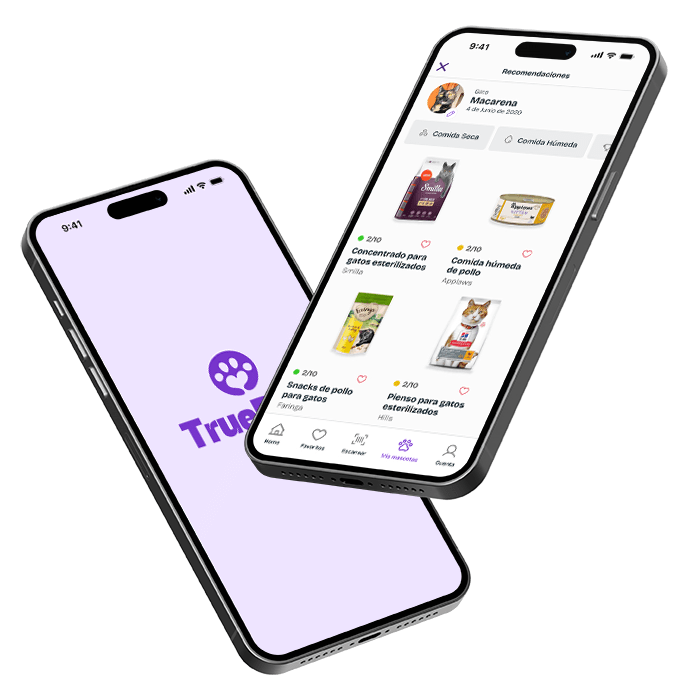
Overview
- The problem
Finding the right food for pets is challenging as their needs vary by species, breed, health, and other factors, combined with the difficulty of understanding product nutritional information.
- Objective
Reduce uncertainty when choosing pet food by providing reliable information and accessible tools to optimize nutrition, improving pets’ health and well-being long-term.
- Solution
Develop a digital product that suggests higher-quality food options based on each pet’s needs and simplifies the analysis of nutritional information.
How is the pet food market?
than children in Spain.
6.265.143
5.858.649
9.280.823
20.1 billons
5.1%
(average value of the last 3 years)
How is the competition tackling the problem?
Direct competitors offer general recommendations but lack personalization. Human nutrition apps simplify information with clear visuals and user-friendly interfaces. This helped me identify best practices to provide tailored, easy-to-understand nutritional insights for pet owners.

- Strengths
- Clear and simple.
- It allows to make an approximate of the grams that our pet needs.
- You can add one pet for free
- Weaknesses
- Long Registration.
- It only allows you to add 1 pet for free.
- Some features are not well understood.
- It is only for dogs.
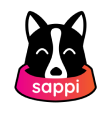
- Strengths
- It is attractive, clear and intuitive.
- The rating of the products and the colors help to know when a product is good or not.
- Good search filters.
- Weaknesses
- It Stops when the scanner is used.
- Not enough products.
- Color is too light and makes it difficult to see the content.
- Pets cannot be added.
App for healthier eating and lifestyle. Includes healthy recipes, product scanner, and personalized nutrition plans.
- Strengths
- Large database with many products.
- New products can be added manually quickly and easily.
- Easy to use and intuitive.
- Weaknesses
- The app is designed for humans
- Overwhelming ads, especially for paid subscriptions
- Users report incorrect or incomplete product details.
Understanding User Needs in Pet Food Purchases
Of interviewees want healthier food options for their pets.
Of pet owners want personalized food recommendations.
Refining User Personas to Address Pet Nutrition Need
Taking into account key pain points, I validate my user personas by focusing on their desire to improve their pets’ nutrition and health while addressing each pet’s unique needs.

User Persona 2
Maria
Zaragoza / 32 years old / Nutritionist
Motivation: Provide a healthy life for her dog, feel confident in food decisions, and grow as a responsible
Frustration: Difficulty finding reliable nutrition information, an overload of choices in the market.

User Persona 1
Carlos
Madrid / 35 years old / Profesor
Motivation: Ensure a healthy life for his cats and improve the health of his sick cat.
Frustration: Difficulty finding options for his sick cat, and stress in managing different diets.
Building an MVP Focused on Personalized Pet Nutrition
Users are looking for quick, personalized nutrition information for their pets, which led to focusing on three key features: a search tool, pet profiles, and a barcode scanner.
- Search engine
The user can search for a product by name or category and access its nutritional information.
- Pet profile
Add pets with key details and receive food recommendations based on their characteristics.
- Scanner
The user can scan any food item’s barcode using their phone’s camera and view its nutritional information.
Defining Categories with Open Card Sorting
Open card sorting was used, selecting key terms and allowing users to categorise them as they wished. The result was an information structure in which the main categories were successfully defined.
Mapping User Flows for Nutritional Insights
I designed user flows for two personas: Maria, who seeks general nutritional information, and Carlos, who looks for food suitable for his two cats, considering one has special dietary needs.
Iterative Wireframing for Enhanced User Testing
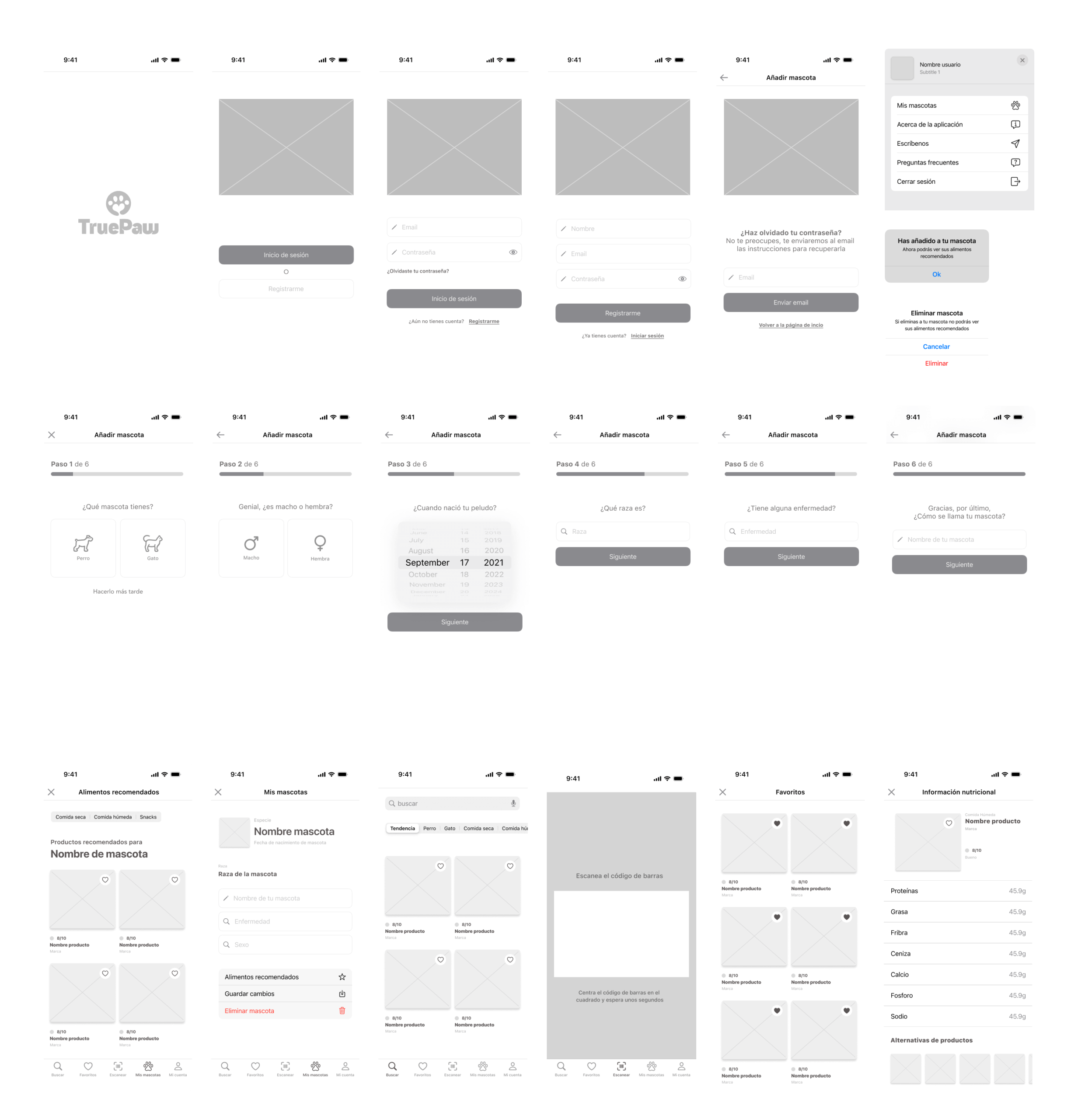
Refining User Flow for an Optimized Experience
I refined the general flow to improve the user experience. These adjustments focused on streamlining interactions, enhancing navigation, and better aligning the design with user needs.
- What work
- Users registered a new profile easily.
- Users added their pet quickly.
- Users viewed nutritional information for products.
- Users searched for food by category.
- What didn't work
- Confusion between home product displays and recommended products for pets
- Difficulty accessing recommended products for each pet
- Home page content left over.
- Recomendations
- Remove extra home screen.
- Add Onboarding
- Better differentiate the food screen for pets.
- Highlight recommended food within the pet profile.
- Change the search icon to a home icon.
- Shorten the path back to home from the nutritional information screen.
- Add a navigation menu to the nutritional information section of the product.
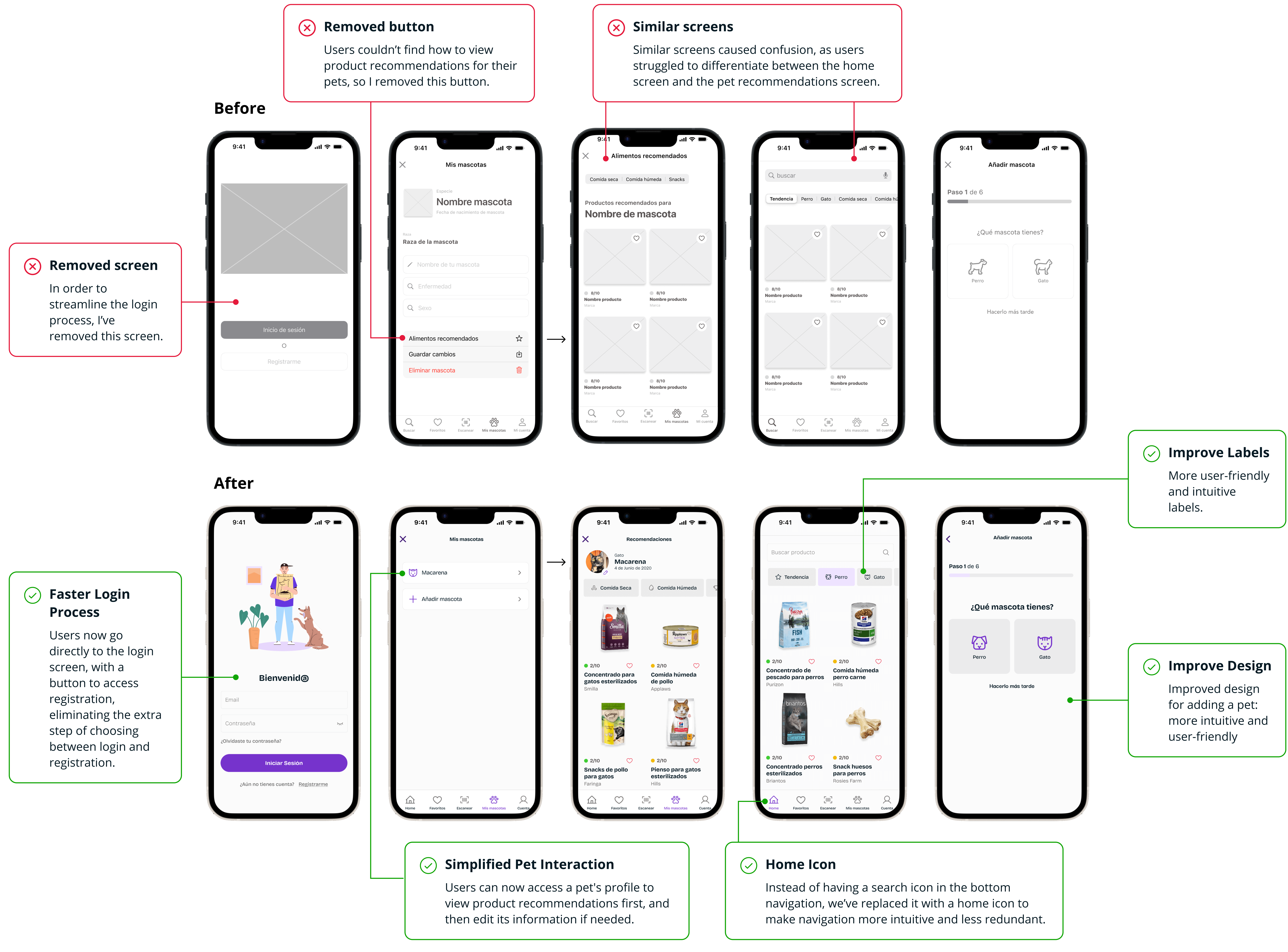
Exploring Design Elemenst: Moodboard, atomic design and brand identity.

TruePaw combines «True» for honest nutrition and «Paw» for pets. The friendly typeface evokes a pet’s tail. The icon blends a heart for affection with a paw print, symbolizing care for pets’ health and well-being.
Colors
Icons
Typography

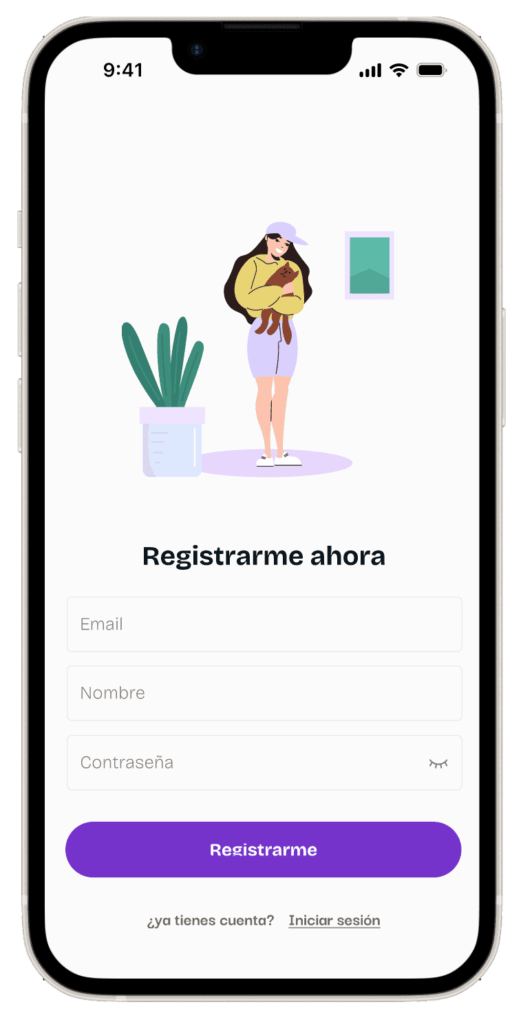

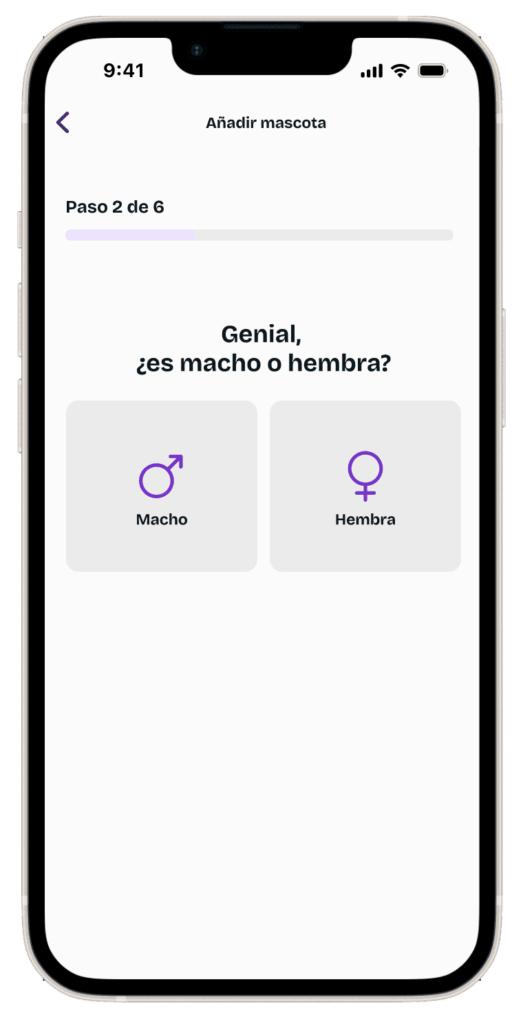

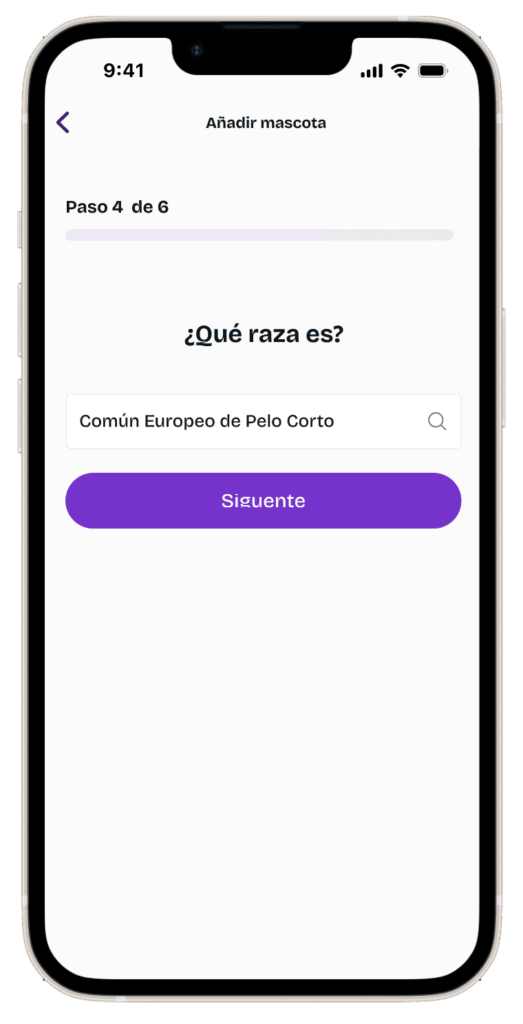
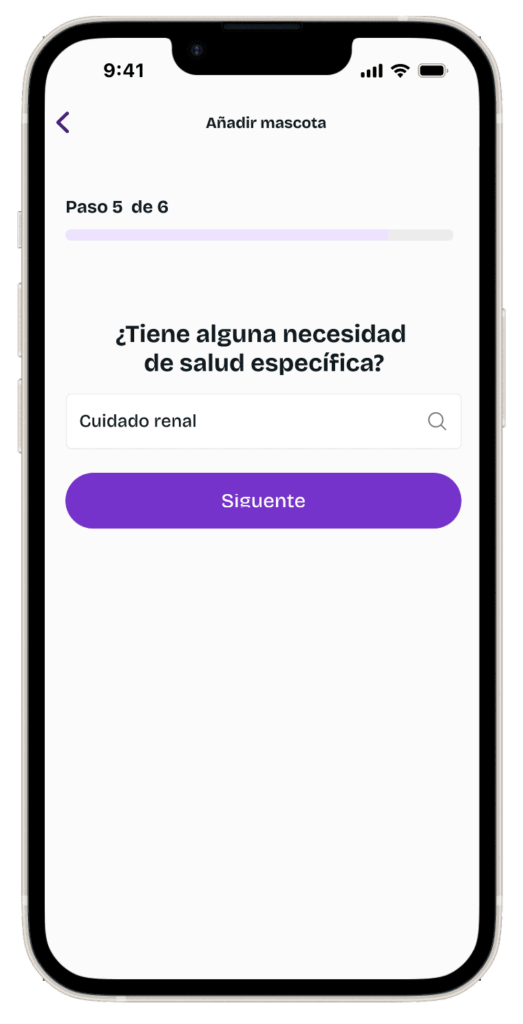
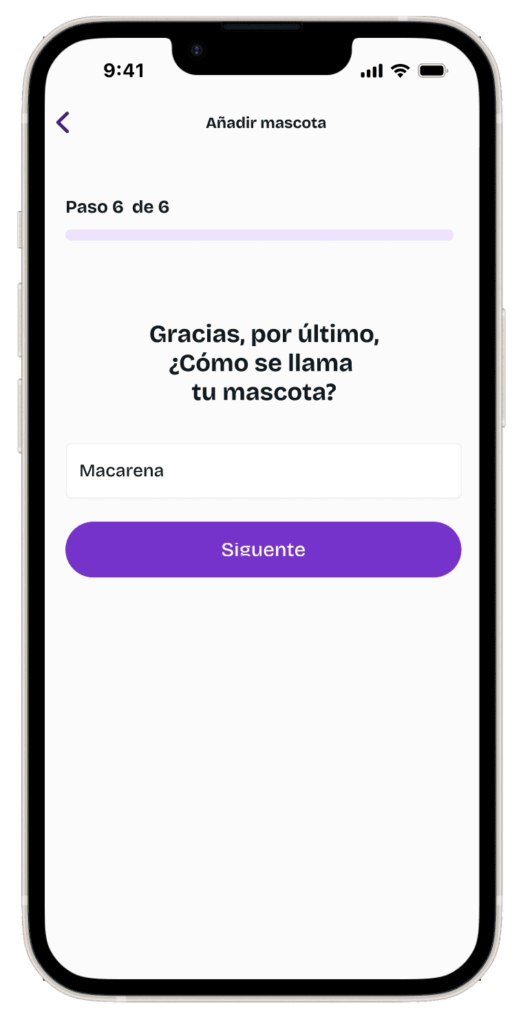

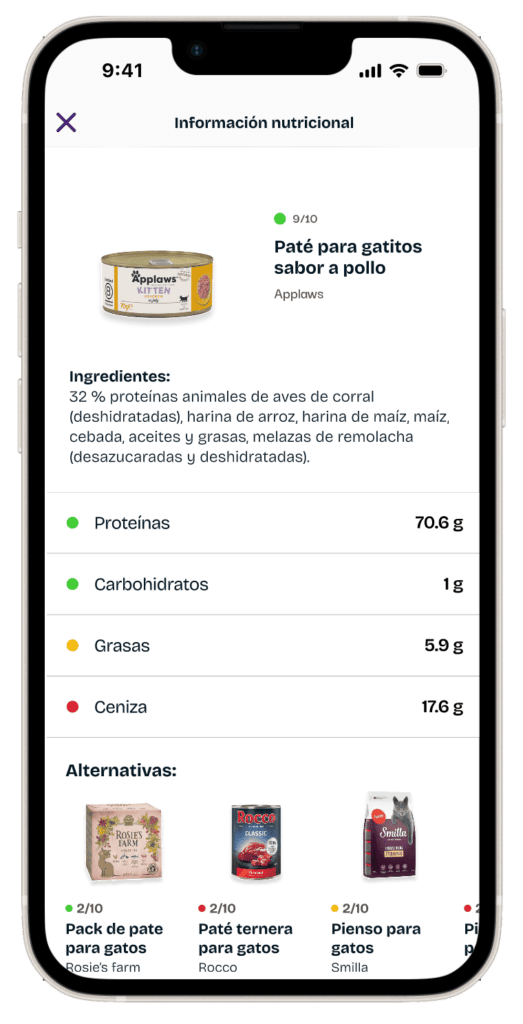
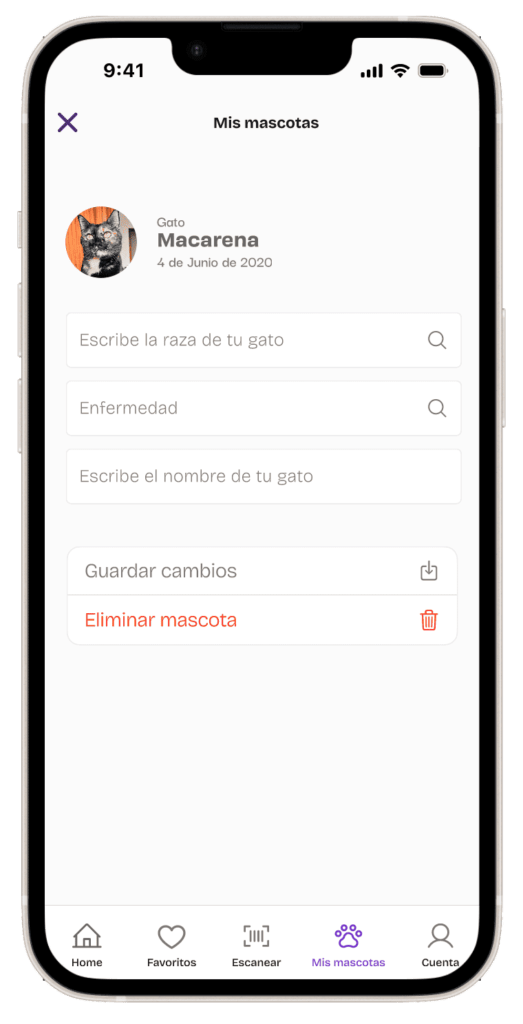



What I learned
Avoid making assumptions: Through interviews, surveys and testing I’ve learned that it’s important to base decisions on real evidence and not assumptions.
The importance of user testing: Conducting user testing is critical because it helps identify key improvements that have a significant impact on product iterations.
Having a well-structured UI library: A well-designed UI library with organised and structured components makes the design process faster and more flexible, allowing changes to be made easily and efficiently.
The usefulness of design patterns: Design patterns help with the initial approach to application design, offering proven solutions that improve consistency and usability, while speeding up the development process.